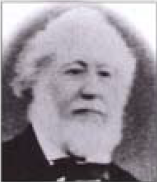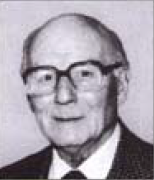Where have all the books come from?
Since the beginning of this year I have become more involved in the cataloguing of Dun's library, and one of the things that I have found fascinating in working with the collection is where all the books in the library come from?
Obviously many of the books in the library have been purchased by the College during the last 300 years, but a large number are also the result of donations by individuals. While some of the larger donations, such as those made by Dr Kirkpatrick or Fleetwood Churchill, are well know, the histories of many of the smaller donations are not. However, the history of the book as an object and its previous owners can provide insight into patterns of learning and knowledge sharing in the past, as well as relationships between doctors.
One example of such a work is the second edition of The Anatomy of Humane Bodies by William Cowper, published in Leiden in 1737, and donated to Dun's Library in 1950 by Henry Jocelyn Eustace. So, where had the book been in the intervening 200 years?
Two inscriptions on the first blank page of the volume give some information;
'Ex Libris Richardi Kirwan, MD' and 'James Pim to John Eustace MD'
Given their positions on the page it seems likely that Richard Kirwan was the first recorded owner of this book, although I've not been able to identify who he was. However John Eustace MD is identifiable.
 |
| John Eustace |
John Eustace was born in 1791 the son of Benjamin Eustace and Mary Fawcett, a Quaker family in Cork. John was the first of his family to study medicine, qualifying in 1815. Ten years later in 1825, John Eustace was one of the founders of the Highfield and Hampstead Private Mental Hospital in Glasnevin. Influenced by his Quaker upbringing, and inspired by the Tuke's family Retreat in York, Eustace's new hospital used the practice of moral treatment, where the patients were treated in comfort and as part of the family.
It was this John Eustace (1791-1867) who received the volume of Cowper's anatomy from James Pim. The identification of Pim is not entirely clear, in a note which accompanied the donation Pim is identified as Eustace's father-in-law. However, Eustace's father-in-law was a Mark Goodbody. Eustace's mother-in-law was however an Elizabeth Pim, and it seems likely that James Pim was a relation of hers, and that the exact relationship has confused as the book passed through the generations. Like the Eustaces, the Goodbodys and the Pims were prominent Quaker families in Ireland in the later eighteenth and early nineteenth century.
 |
| Henry Jocelyn Eustace |
In founding the Highfield Hospital John Eustace also founded a family business; John Eustace's two sons succeeded their father as managers of the hospital, as did members of the next three generations of the Eustace family. This volume of Cowper's Anatomy also seems to have passed through the hands of the various medical members of the Eustace family until 1950, when Henry Jocelyn Eustace donated it to the library here. Henry Jocelyn (1908-1996) was the first John Eustace's great-grandson, and was from a line of medics with the exception of his father who managed the family farm and estate. Although never a partner in the family business, Henry Jocelyn did assist at the hospital. He was also a lecturer in Trinity College, Dublin, and Consultant Psychiatrist to several Dublin Hospitals.
Donations like the one by Henry Jocelyn Eustace have been instrumental in the development of not only the library, but also the archive and heritage items collection, held by RCPI. The Heritage Centre has recently launched a
Collection Development Policy, which outlines our collecting aims and criteria, and we are willing to discuss any potential donations.